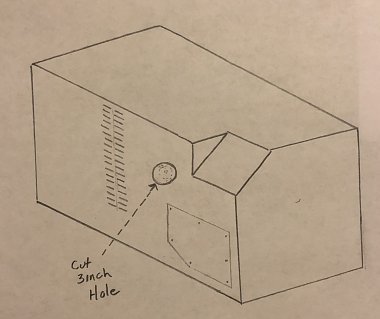I've searched the forum and many others trying to find answers to this topic, but most are just a little different or don't quite fit the bill. We bought our coach a few months ago (01 Rexhall Aerbus), and when I checked it out with the mechanic, the generator ran fine, including with both A/C's running and microwave.
It's a -- Generac Quietpact 75d 7500watt
About 3 days after purchase, the A/C wouldn't start up well on the Genset, but on shore power it all worked fine. So I started to inspect the generator and opened the junction box right on the firewall where the main leads from genset come out and connect to the RV leads. I put my leads on and tested power with NO load, and I have 125 VAC at 62hz. It will run like this for hours, and I can run the tv, and other small things just fine, but as soon as I apply a larger load, like microwave or A/C compressors, the voltage immediately drops down to around 60 VAC at about 20hz, however, there is absolutely no change in engine speed. It doesn't even hesitate for a second.
I have panel access to the control board. I have increased governor speed a tiny bit and VAC and HZ went up respectively, so the governer seems fine. Wanted to get advice to see if the slip rings or voltage regulator or whatever else can cause this behavior so I know where to look next. BTW, getting to the slip rings/brushes is gonna be quite difficult. Also the belt and tensioner will be hard as well, so I want adive to see if this is something on the control board or regulator cause those things are easy to access. Thanks
It's a -- Generac Quietpact 75d 7500watt
About 3 days after purchase, the A/C wouldn't start up well on the Genset, but on shore power it all worked fine. So I started to inspect the generator and opened the junction box right on the firewall where the main leads from genset come out and connect to the RV leads. I put my leads on and tested power with NO load, and I have 125 VAC at 62hz. It will run like this for hours, and I can run the tv, and other small things just fine, but as soon as I apply a larger load, like microwave or A/C compressors, the voltage immediately drops down to around 60 VAC at about 20hz, however, there is absolutely no change in engine speed. It doesn't even hesitate for a second.
I have panel access to the control board. I have increased governor speed a tiny bit and VAC and HZ went up respectively, so the governer seems fine. Wanted to get advice to see if the slip rings or voltage regulator or whatever else can cause this behavior so I know where to look next. BTW, getting to the slip rings/brushes is gonna be quite difficult. Also the belt and tensioner will be hard as well, so I want adive to see if this is something on the control board or regulator cause those things are easy to access. Thanks

